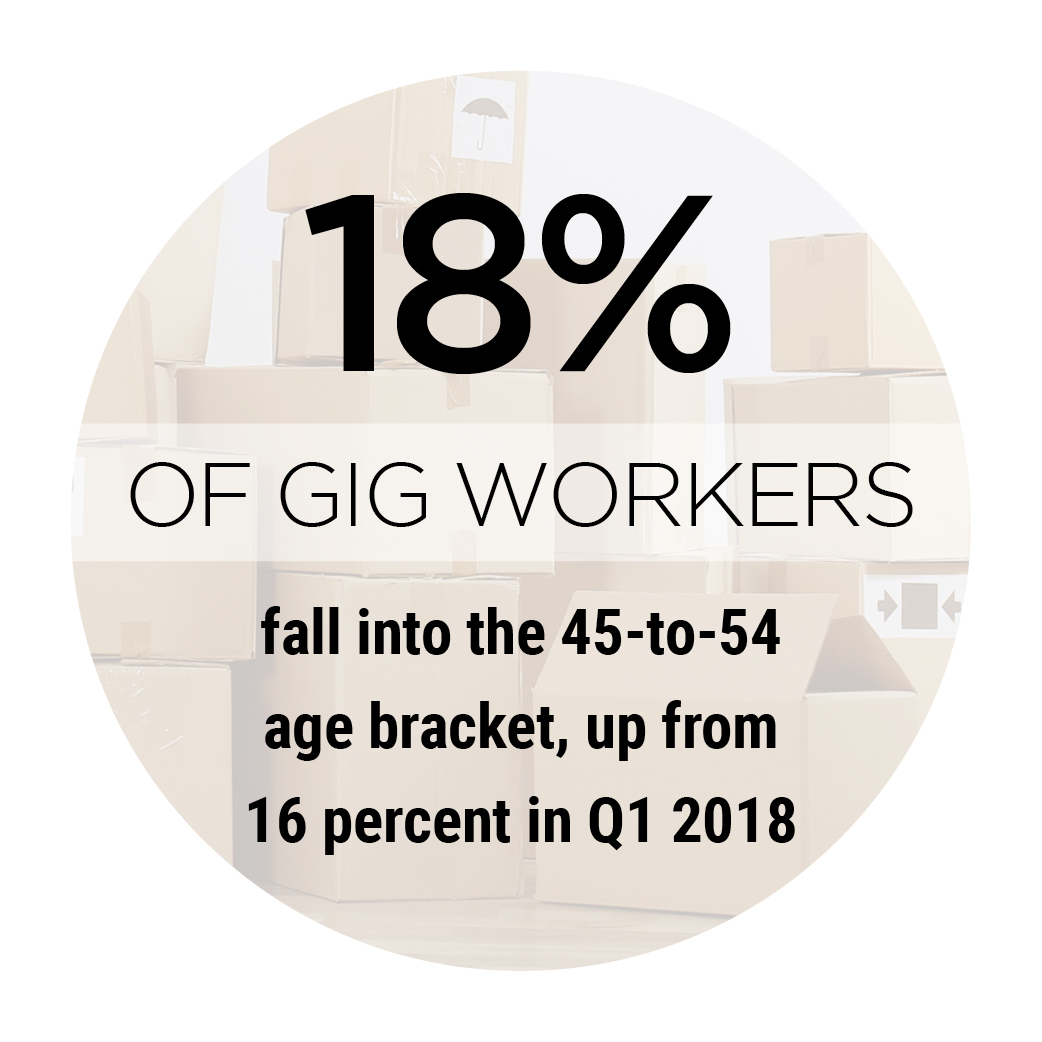NEW DATA: 58 Percent Of Gig Workers Don’t Hold Full-Time Jobs — And Don’t Want To

The gig economy was once seen as a temporary holdover — an opportunity to earn supplemental income by taking on ad hoc work designing websites, doing yardwork or driving for a rideshare service as time allowed. However, based on recent data trends, that appears to be changing.
Out of approximately 10,000 gig workers surveyed by PYMNTS, only 47 percent said they had a full-time job in Q2 2018, a drop from 55 percent in Q1 2018. This shift away from nine-to-five, full-time work indicates that more workers view juggling gig work as a viable career path.
 Twenty-five percent cited flexibility as the top rated motivator for pursuing a career in the gig economy. PYMNTS’ research also found that the younger the gig worker, the more likely flexibility is to drive gig economy participation.
Twenty-five percent cited flexibility as the top rated motivator for pursuing a career in the gig economy. PYMNTS’ research also found that the younger the gig worker, the more likely flexibility is to drive gig economy participation.
In addition to flexibility, income is a powerful motivator for workers to participate in the gig economy. In Q2 2018, a higher share of full-time gig workers (22 percent) reported taking on gig work to pay day-to-day bills than in Q1 2018. At the same time, fewer gig workers said they took on gig work as a hobby, meaning it now commands a sizable share of workers’ household income. In fact, 42.7 percent of gig workers derived 40 percent or more of their income from gig work in Q2 2018.
The most recent quarter saw the average gig worker turn a few shades grayer. Eighteen percent of gig workers were in the 45-to-54 age bracket, up from 16.6 percent in Q1 2018, the most significant shift in age bracket reported this quarter. Meanwhile, the participation of gig workers between ages 25 and 34 dropped slightly from 19 percent to 15 percent.
Other key takeaways from the Gig Economy Index™ include:
- In Q2 2018, 33.8 percent of the U.S. workforce participated in the gig economy, a slight drop from 34.5 percent — a trend largely impacted by the seasonality of certain jobs.
- Thirty-three percent of gig workers receive their earnings via PayPal, while 25 percent are paid via direct deposit.
- Speed of payment remains a top concern among gig workers, with 5 percent saying they would take on more gig work if they were paid faster.
This edition of the Gig Economy Index™ also includes a Deep Dive that focuses on the role that digital marketplaces play in helping workers connect with gigs. In Q2 2018, PYMNTS found a higher share of workers (59 percent) used digital marketplaces to find gig work. The majority said they used these platforms to find work-related leads. However, awareness of marketplaces (or more specifically, a lack thereof) continues to be a significant barrier for gig workers to make greater use of digital marketplaces.
Creating A Gig Worker-Centric Online Job Application
Digital marketplaces have seemingly streamlined the way workers find gigs today.
PYMNTS recently caught up with digital marketplace tilr to discuss gig workers’ changing expectations when it comes to finding and getting paid for gigs. The recruitment platform, which utilizes an algorithm that focuses more on keywords in a gig workers’ resume than on their job title, has approximately 30,000 members at this time, including a significant share of full-time professionals seeking gig work so as to pursue an interest in another field.
Summer Crenshaw, tilr’s COO, CMO and co-founder, said gig workers want to exercise greater control over their destinies. This motivation, Crenshaw recently told PYMNTS, can be a greater reason for workers of all stripes to participate in the gig economy than economic necessity.
“It is not a millennial, Gen X or baby boomer value,” Crenshaw said. “Rather, it is a workforce value — and what that value is, is that people want this new control over their daily ability to earn income for their families.”
Find the interview with Crenshaw, a Deep Dive and more than 500 data points — based on insights from nearly 10,000 gig workers on the forces shaping the gig economy — in the new Gig Economy Index™.
About The Index™
The Gig Economy Index™, a Hyperwallet collaboration, is designed to better understand workers in the gig economy, people who often work in short-term, ad hoc positions — who they are, what services they supply and what percentage of their overall income that gigs represent.
The Index™ features a survey of nearly 10,000 people who have participated in the gig economy in the past year. The Index™ further breaks down details such as age, gender, race, income, education, time spent in the gig economy and payment mechanisms.


